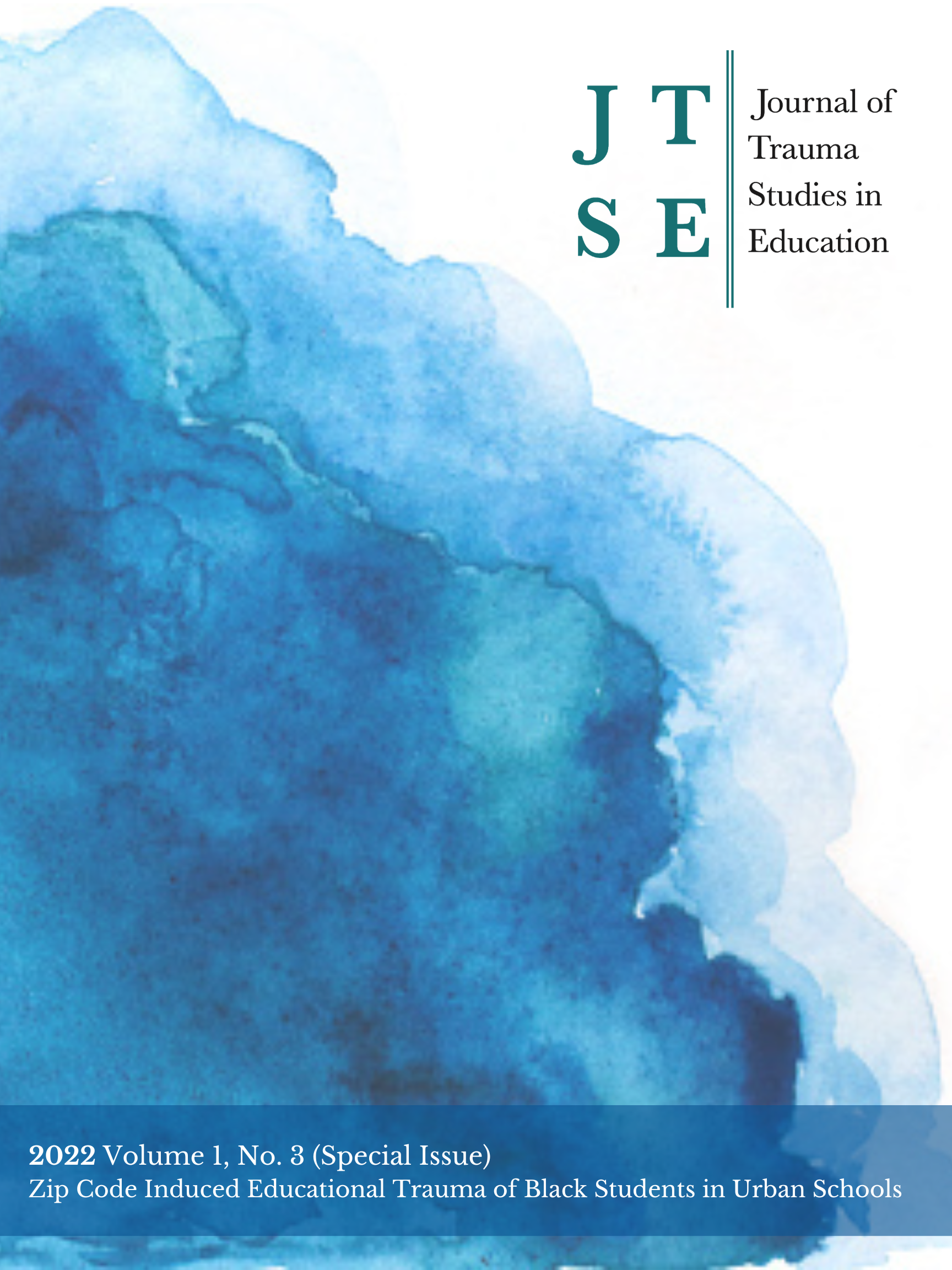Black Spaces Matter
Post-Pandemic Culturally Responsive Trauma Approaches for Urban Black Youth
Keywords:
zip code trauma, spatial modeling, spatial inequalities, racial trauma, urban schools, mixed methods, retrospective reflectionsAbstract
This study utilizes a mixed methods approach to assess trauma and Black student disparities within high adversity zip codes vs those in well-resourced settings. Spatial statistical mapping of trauma vulnerability by block group reveals where any student, irrespective of zip code, may be at greater risk for trauma from violence, racism, and/or other adversity. Outcomes for 2019-2020 school year are compared between four high schools of varied spatial trauma. Retrospective reflections discuss the traumatic impacts of the pandemic on two Black boys living in medium and low trauma zip codes. Results suggest that Black students do not necessarily benefit from access to high performing schools in well-resourced zip codes, and school management policies and practices may be a more significant predictor of Black student experience than zip code. Recommendations call for continued mixed method designs that amplify student voice in the quest for solutions to trauma in Black spaces.
Downloads
Downloads
Published
How to Cite
Issue
Section
License
Copyright (c) 2022 Journal of Trauma Studies in Education

This work is licensed under a Creative Commons Attribution-NonCommercial-NoDerivatives 4.0 International License.
Upon publication articles are immediately and freely available to anyone, anywhere, at any time. All published articles are licensed under a Creative Commons Attribution-NonCommercial-NoDerivs 4.0 Unported License. All articles are permanently available online. The final version of articles may be posted to an institutional repository or to the author's own website as long as the article includes a link back to the original article posted on JTSE.


